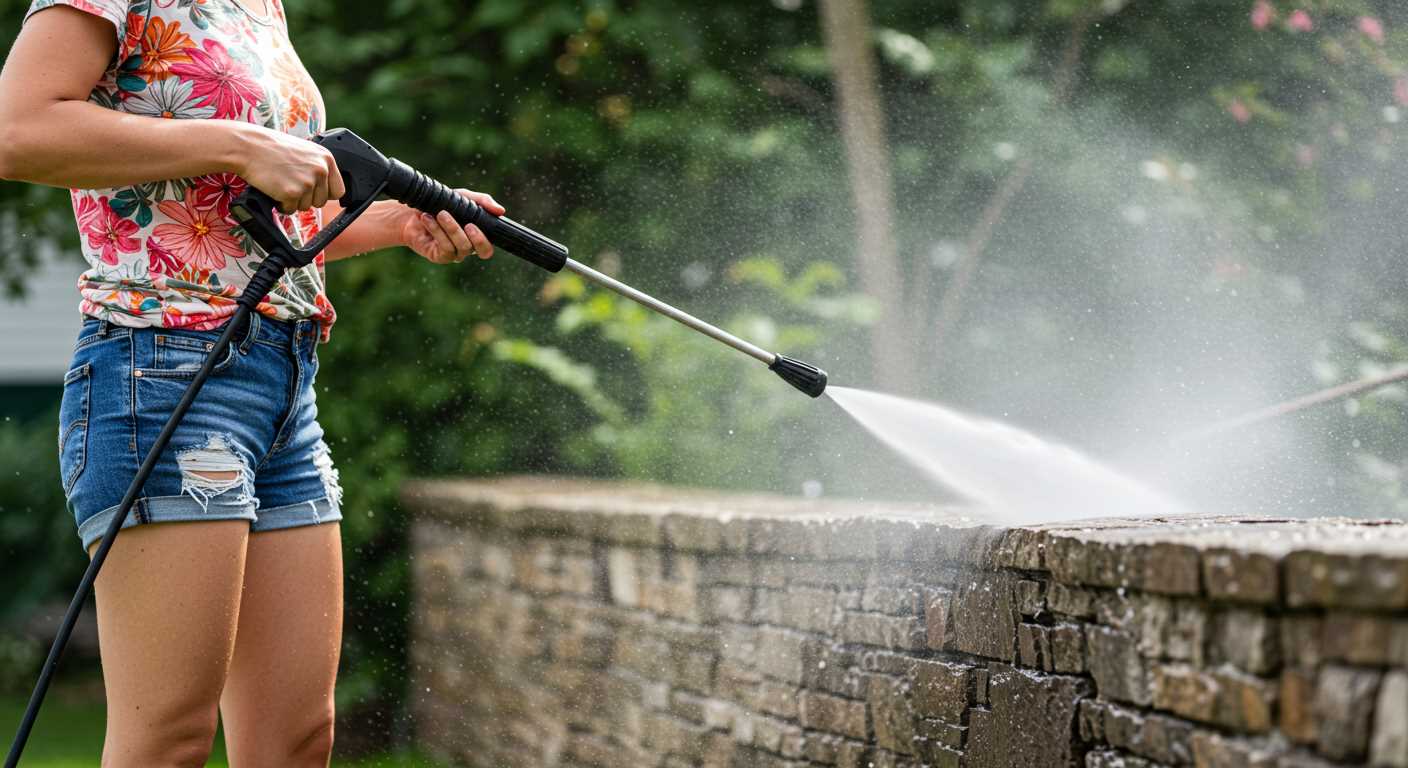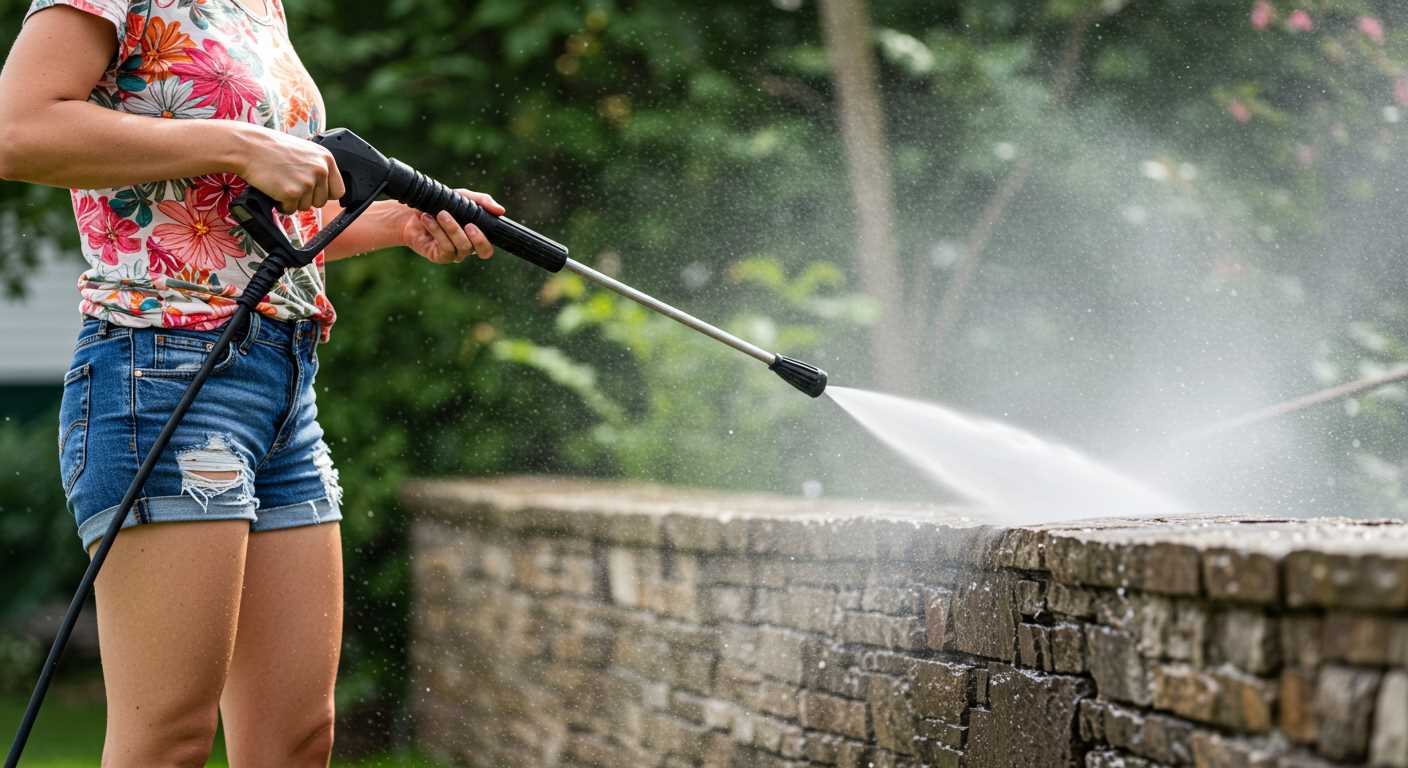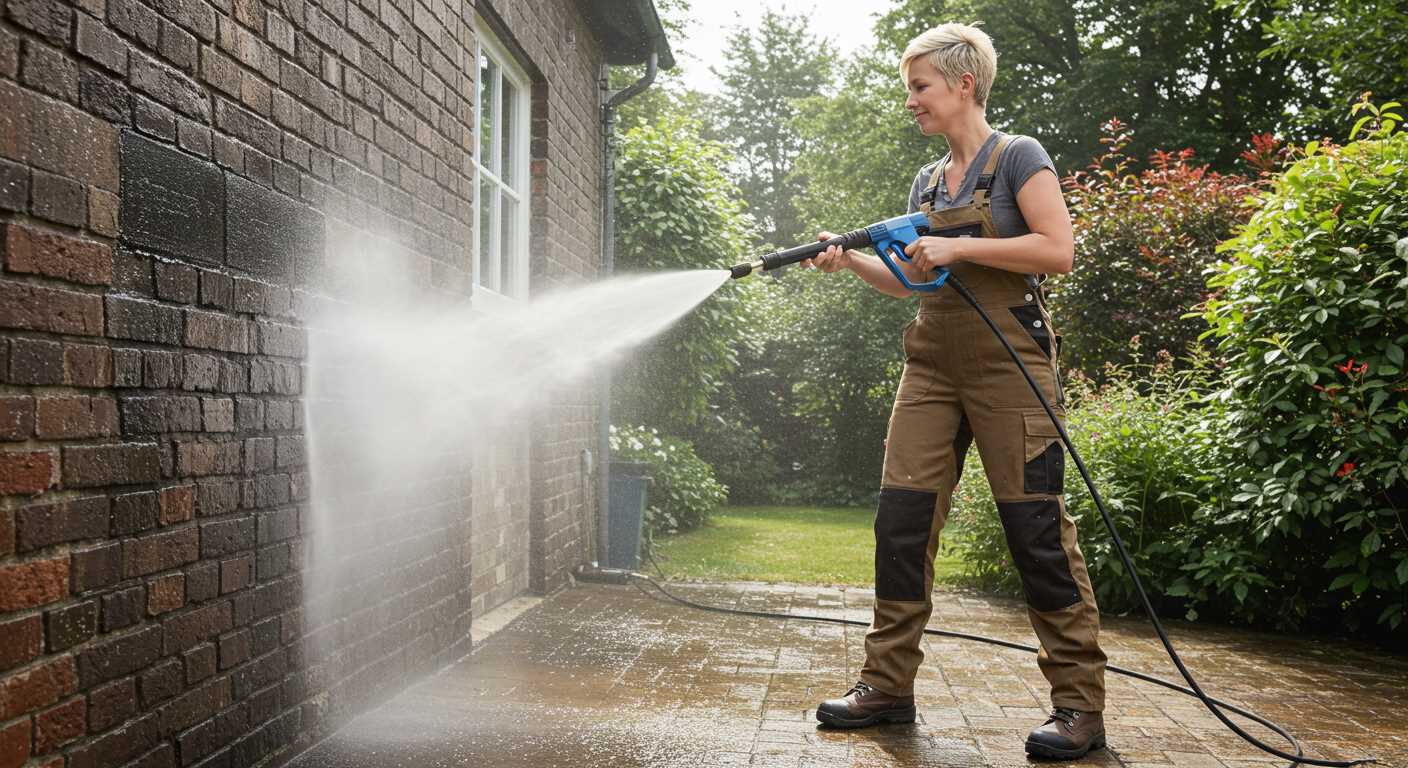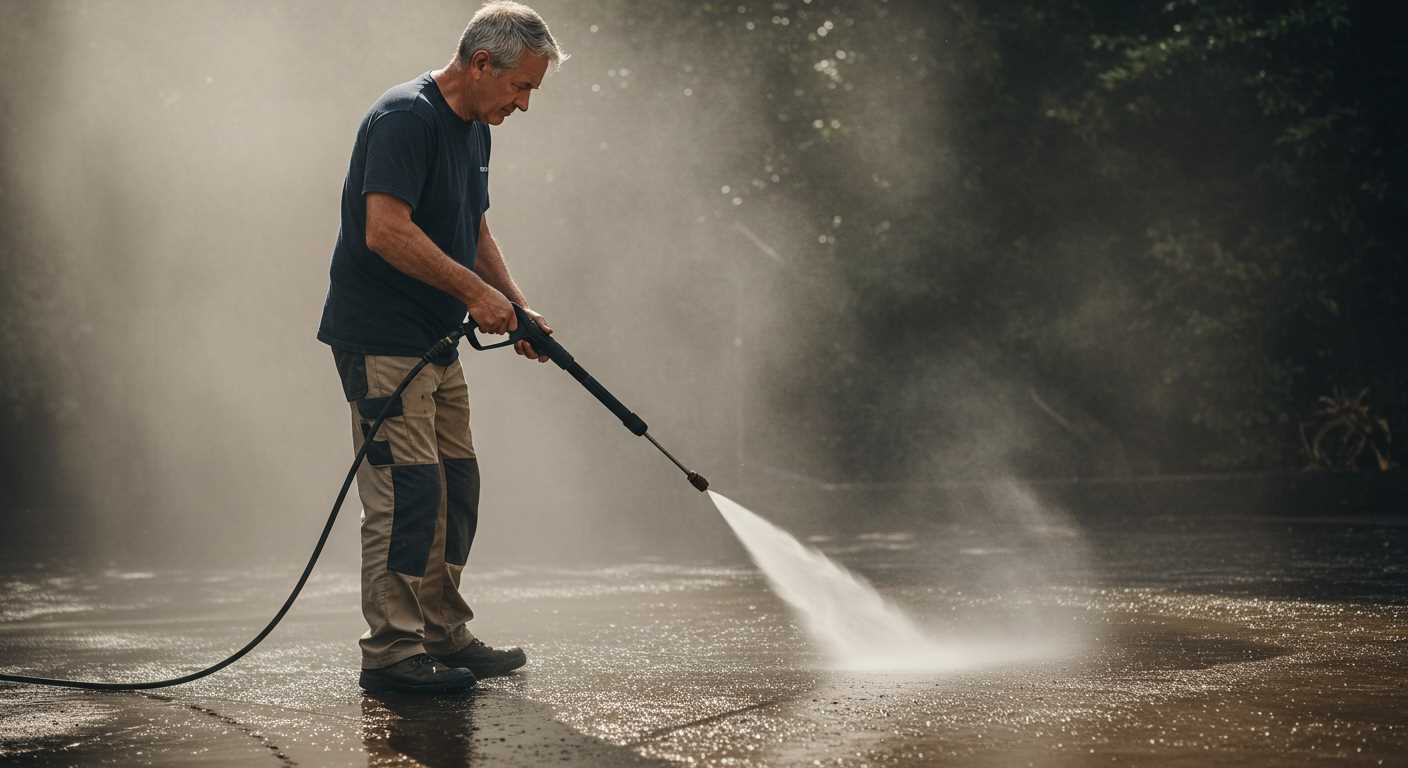




Begin by disconnecting the water supply and turning off the device. It’s crucial to remove all water to prevent freezing damage. I recall a time when I neglected this step and ended up with a costly repair. A simple precaution can save you from headaches down the line.
Next, locate the drain plug, typically found at the bottom of the unit. Unscrew it carefully and allow any remaining water to escape. In my experience, having a bucket underneath can help catch excess liquid, preventing a mess in your workspace.
After draining, it’s wise to run the machine briefly to expel any residual moisture from the pump. I usually do this for about 30 seconds; it’s a quick yet effective way to ensure everything is dry. Following this, consider using a pump protector. This fluid helps lubricate the internals and offers additional protection against frost damage.
Finally, store the equipment in a dry, sheltered location. I recommend a garage or shed, away from extreme temperatures. Keeping it covered will also protect it from dust and debris. Taking these steps will ensure your high-pressure cleaner remains in excellent condition, ready for use when the warmer months return.
Preparation Steps for Cold Weather Storage
Disconnect the device from the power supply to avoid any electrical hazards. Always ensure that the machine is turned off before proceeding with any maintenance.
Check the water inlet filter for debris. A clean filter prevents clogs and potential damage during the cold months.
Remove any accessories like nozzles, hoses, or wands. Store them in a dry location to prevent damage from freezing temperatures.
Water Removal Techniques
With the unit turned off and unplugged, locate the drainage valve. Open it to let any residual water flow out. If the machine lacks a dedicated valve, simply tilting the unit can assist in expelling trapped moisture.
After draining, activate the unit briefly without water. This will help expel any remaining liquid in the pump and hoses. Make sure to do this in a safe manner, directing the outlet away from yourself and others.
Antifreeze Application
Consider using a non-toxic antifreeze solution specifically designed for cleaning equipment. Pour this solution into the water inlet, allowing it to circulate through the internal components. This step is crucial to protect the internal workings from frost damage.
Run the unit for a minute after adding the antifreeze to ensure it reaches all necessary areas.
Final Checks and Storage
Inspect the entire machine for any signs of wear or damage. Address any issues before storage to avoid complications in the following season.
Store the unit in a climate-controlled environment, if possible. If not, insulate it properly to shield against extreme temperatures.
Gather Necessary Tools for Winterisation
Before you start preparing your equipment for the colder months, ensure you have the right tools at hand. This will streamline the process and help you avoid any mishaps.
Required Items
- Wrench set: Useful for disconnecting hoses and nozzles.
- Bucket: To collect any remaining water.
- Screwdriver: Handy for any necessary adjustments.
- Air compressor: Ideal for blowing out residual moisture from the system.
- Storage oil: To protect components from corrosion during storage.
- Protective gloves: To keep your hands safe and clean.
- Old towels or rags: These will help in drying off parts and cleaning up spills.
Optional Tools
- Heat gun: Useful for thawing any frozen parts quickly.
- Sealant tape: For ensuring tight connections when reassembling.
- Labeling stickers: To keep track of any disassembled parts for easy reassembly.
Having these tools ready will make the preparation process smoother and more efficient. I remember one winter when I didn’t have a compressor on hand; it turned into a lengthy ordeal trying to remove water manually. Lesson learned: always be prepared!
Turn Off and Disconnect the Pressure Washer
First, ensure the unit is completely powered down. Locate the power switch and turn it off. This step is crucial to prevent any accidental activation while servicing the machine. Once switched off, unplug the power cord from the electrical outlet. Make sure to store the cord properly to avoid damage.
Next, detach the water supply hose. This can usually be done by unscrewing the connector at the inlet. If your model has a quick-release mechanism, use it to expedite the process. After removing the hose, ensure that any remaining water is drained out to avoid freezing.
Disconnecting Additional Components
If your model includes a detergent container or other attachments, disconnect these as well. This prevents any leftover cleaning solutions from becoming a problem during colder months. For a seamless transition into storage, clean these components thoroughly before removal.
Final Checks
Inspect all connections and hoses for any signs of wear or damage. This is a good opportunity to make repairs or replacements if needed, ensuring your equipment is in optimal condition for the next use. Always store your unit in a dry place to protect it from moisture. For those considering alternatives, I recommend checking out a belt drive pressure washer for durability and performance.
| Step | Action |
|---|---|
| 1 | Switch off the power |
| 2 | Unplug the power cord |
| 3 | Detach the water supply hose |
| 4 | Remove additional components |
| 5 | Inspect for wear and store properly |
Release Water from the Hose and Nozzle
To ensure all moisture is expelled from the hose and nozzle, follow these precise steps.
Step-by-Step Process
- Reconnect the hose to the machine briefly to allow water to flow through.
- Activate the trigger on the spray gun to expel any leftover water in the nozzle.
- With the gun still engaged, move the nozzle around to ensure complete drainage.
- Once you notice no more water is coming out, release the trigger and disconnect the hose.
Final Checks
After the water has been cleared, inspect both the hose and nozzle for any remaining moisture. It’s wise to let them air dry completely before storing. Storing damp components can lead to mould growth. For added cleanliness, consider using the best antimicrobial body scrubber to keep your equipment in top condition.
By completing this process, you’ll prolong the life of your gear and ensure it’s ready for use when the season changes.
Remove and Clean the Filter
First, locate the filter, typically found at the water inlet. Disconnect the hose connected to the inlet to access it easily. Once the hose is removed, you’ll see the filter screen. This component traps debris and prevents it from entering the system, so keeping it clean is vital.
Carefully pull the filter out using your fingers or a pair of pliers if it’s stubborn. Rinse it under warm water to eliminate any dirt or scale build-up. If you notice heavy deposits, use a soft brush to scrub it gently. Avoid harsh chemicals that could damage the filter material.
Inspect the filter for any signs of wear or damage. If you find cracks or tears, replace it to ensure optimal performance when you use the machine again. After cleaning or replacing, reinstall the filter back into the inlet, ensuring it sits securely in place.
Reconnect the hose and check for leaks. A clean filter not only prolongs the lifespan of your equipment but also maintains its efficiency. Taking these steps will help you avoid unexpected issues when you’re ready to use the machine again.
Drain the Pump Properly
Ensure you remove all remaining liquid from the pump to prevent freezing damage. Start by locating the pump drain plug, typically found at the bottom of the unit. Use a suitable container to catch the expelled liquid. Carefully unscrew the plug and allow any residual water to flow out completely.
After draining, inspect the area for any trapped moisture. If necessary, tilt the unit slightly to help any remaining drops escape. Once you’re confident it’s dry, replace the drain plug securely to avoid leaks during storage.
Consider running the machine briefly after the initial draining to help clear any residual moisture in the system. Just remember to ensure that the nozzle is off and the unit is disconnected from the power source. It’s a simple step that can save you from potential headaches later on.
Regularly checking this part of your routine can extend the life of your equipment significantly. I’ve seen too many units damaged because of neglecting such a straightforward task. Taking the time to do it right pays off in the long run.
Use Antifreeze for Extra Protection
To ensure your cleaning equipment remains in top condition during the colder months, consider using antifreeze as an added layer of defence. This step is particularly beneficial if your device will be stored in an unheated space where temperatures may drop significantly.
Choosing the Right Antifreeze
Select a non-toxic antifreeze specifically designed for use in cleaning machines. Many manufacturers offer products formulated to prevent corrosion while safeguarding internal components. Always check the label to confirm compatibility with your equipment.
Application Process
After you’ve emptied the system, pour the antifreeze into the inlet where water typically flows. Activate the machine for a few seconds to ensure the fluid circulates through the pump and out the nozzle. This action helps to coat the internal parts, offering protection against freezing temperatures.
Don’t forget to follow up by cleaning the nozzle and hose thoroughly to eliminate any potential residue. Store the antifreeze as per the manufacturer’s guidelines and maintain proper ventilation in the storage area to avoid the build-up of fumes.
Using antifreeze is a proactive approach that I’ve adopted over the years, especially in regions where winter conditions are severe. Each time I’ve taken this step, I’ve noticed significant reductions in wear and tear, allowing my equipment to perform flawlessly when spring arrives.
Store the Pressure Washer in a Suitable Location
Choose a dry, temperature-controlled environment to keep the equipment safe from extreme cold or moisture. A garage or shed is ideal, provided it remains above freezing. If no indoor options are available, consider using an insulated cover to protect it from the elements.
Optimal Storage Conditions
Avoid placing the device directly on a concrete floor, as this can lead to cold transfer. Instead, use a wooden pallet or shelf to elevate it. Ensure the area is well-ventilated to prevent mildew or mould growth.
Organising Accessories
Keep all accessories, such as hoses, nozzles, and connectors, neatly stored together. A toolbox or storage bin can help maintain organisation and prevent damage. Label everything for quick access when you need it again.
| Storage Tips | Benefits |
|---|---|
| Store in a temperature-controlled space | Prevents freezing and damage |
| Use an insulated cover | Extra protection from moisture |
| Elevate from concrete floors | Reduces cold transfer |
| Organise accessories in a toolbox | Prevents loss and damage |
Following these guidelines will extend the life of your equipment and ensure it’s ready for use when the season changes. A little preparation goes a long way in maintaining performance and reliability.
Check for Any Remaining Water Before Use
Inspecting the unit for trapped moisture is critical before starting any cleaning tasks. I always make it a point to perform this check, as even small amounts of water can cause issues. Begin by tilting the machine slightly to allow any residual liquid to escape. Pay special attention to the pump area and the hose connections where water may linger.
Examine the Nozzle and Hose
Remove the nozzle and inspect it closely. Occasionally, I’ve found droplets sitting in the nozzle that could create problems during operation. A quick shake of the hose also helps. If there’s any water left in the line, it can lead to inconsistent performance or even damage. Run a few seconds of air through the nozzle to ensure it’s completely dry.
Final Checks
After performing these checks, I recommend leaving the unit in a warm environment for a short period. This allows any remaining moisture to evaporate completely. It’s a simple step that can save a lot of hassle down the line, ensuring your machine operates smoothly when you need it most.
FAQ:
Why is it necessary to drain a Karcher pressure washer before winter?
Draining your Karcher pressure washer before winter is important to prevent damage caused by freezing temperatures. Water left in the pump and hoses can freeze, expand, and potentially crack or break components. By properly draining the machine, you can ensure its longevity and reliable performance for the next season.
What steps should I follow to drain my Karcher pressure washer?
To drain your Karcher pressure washer, first ensure the machine is turned off and unplugged. Detach the water supply and activate the trigger on the gun to release any remaining pressure. Next, remove the hose and spray lance, and tilt the machine to allow water to flow out completely. It may also be advisable to run the machine for a few seconds without water to expel any residual moisture. Finally, store the washer in a dry, frost-free location.
Can I use antifreeze in my Karcher pressure washer for winter storage?
Using antifreeze in a Karcher pressure washer is not generally recommended, as it can damage the internal components. Instead, it is best to drain all water from the machine and store it in a dry place. If you live in an area with extreme cold, consider using a pressure washer winterising kit specifically designed for this purpose, which may include products that are safe for your equipment.
How can I tell if my Karcher pressure washer has been properly drained?
To ensure that your Karcher pressure washer is properly drained, check that no water remains in the pump or hoses. You can do this by tilting the machine and observing if any water drips from the outlets. Additionally, activating the trigger on the gun should produce no water flow if the unit is completely drained. If you’re unsure, running the machine for a few seconds without water can help expel any leftover moisture.
What are the risks of not draining my Karcher pressure washer before winter?
If you do not drain your Karcher pressure washer before winter, the water left inside can freeze and expand, causing severe damage to the pump, hoses, and other internal components. This can lead to costly repairs or the need for a replacement. Furthermore, frozen water can block the flow of water when you try to use the washer again, leading to further frustration and potential damage during the next season’s operation.




.jpg)


